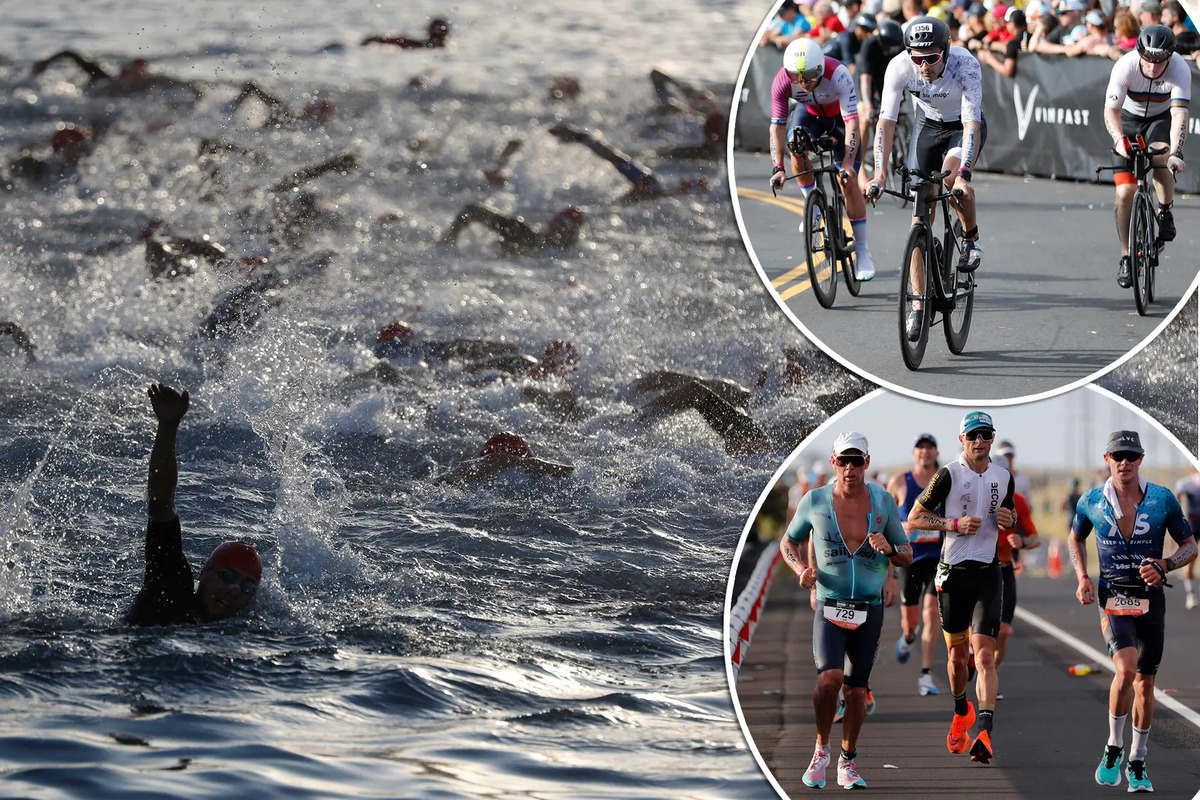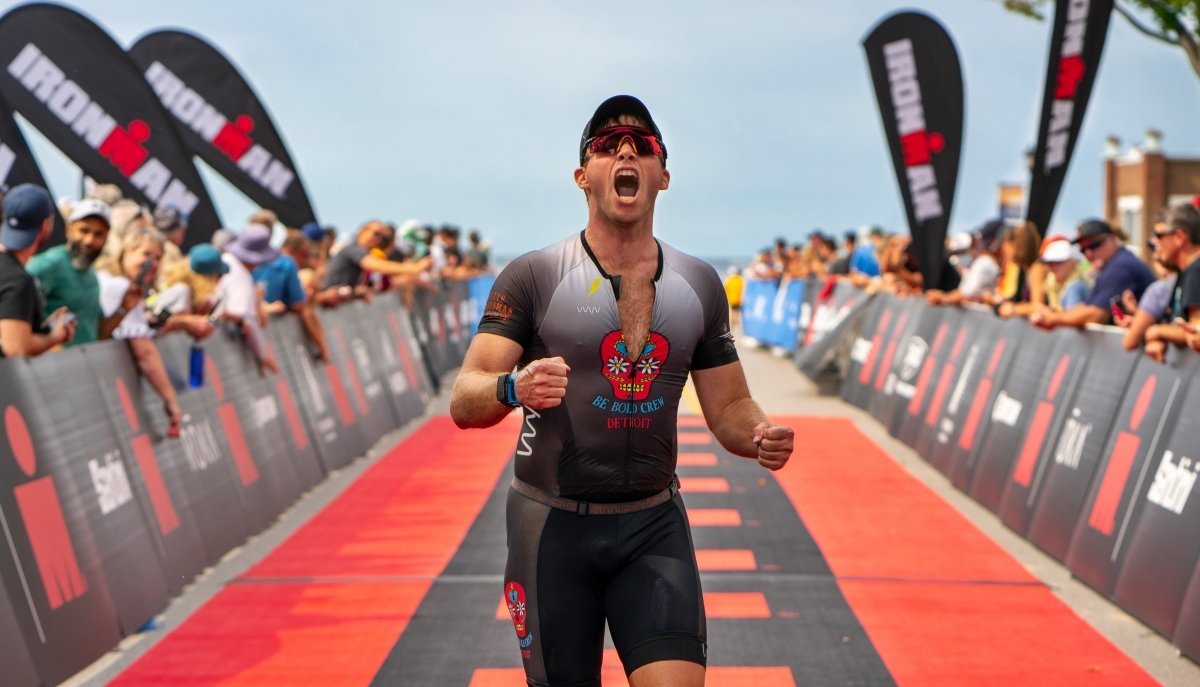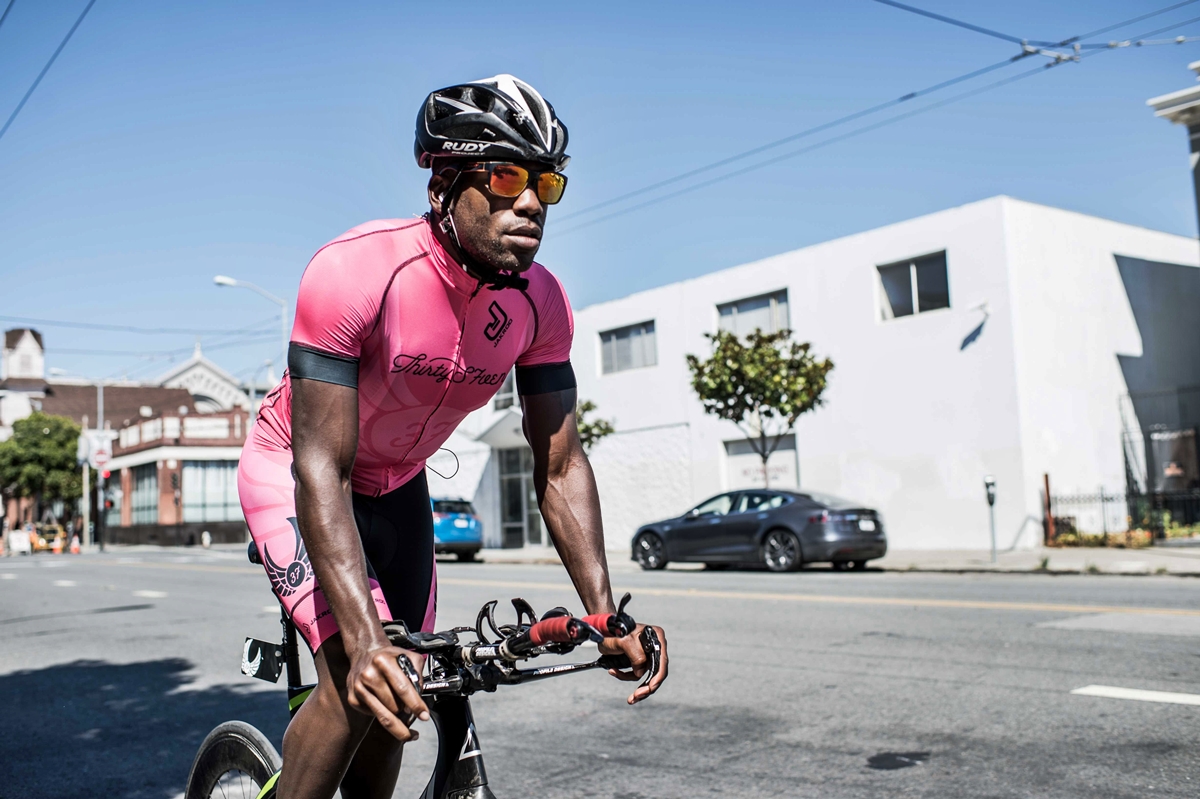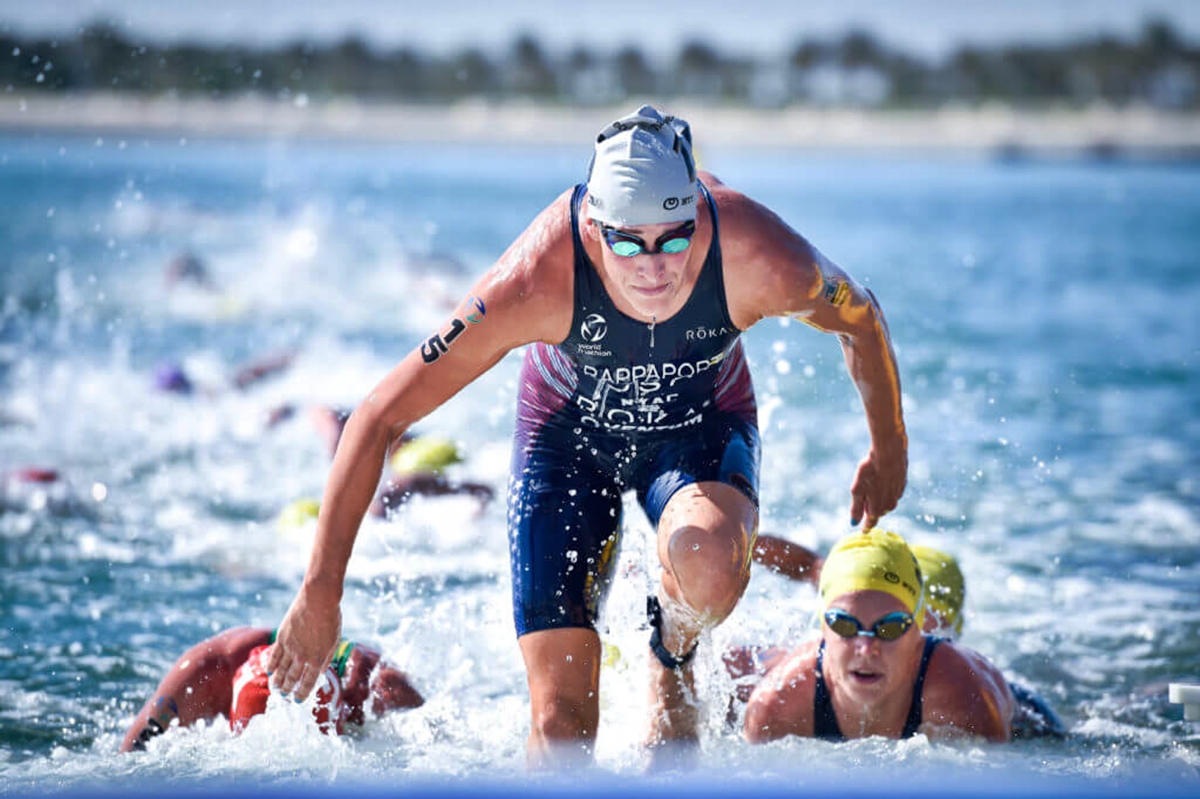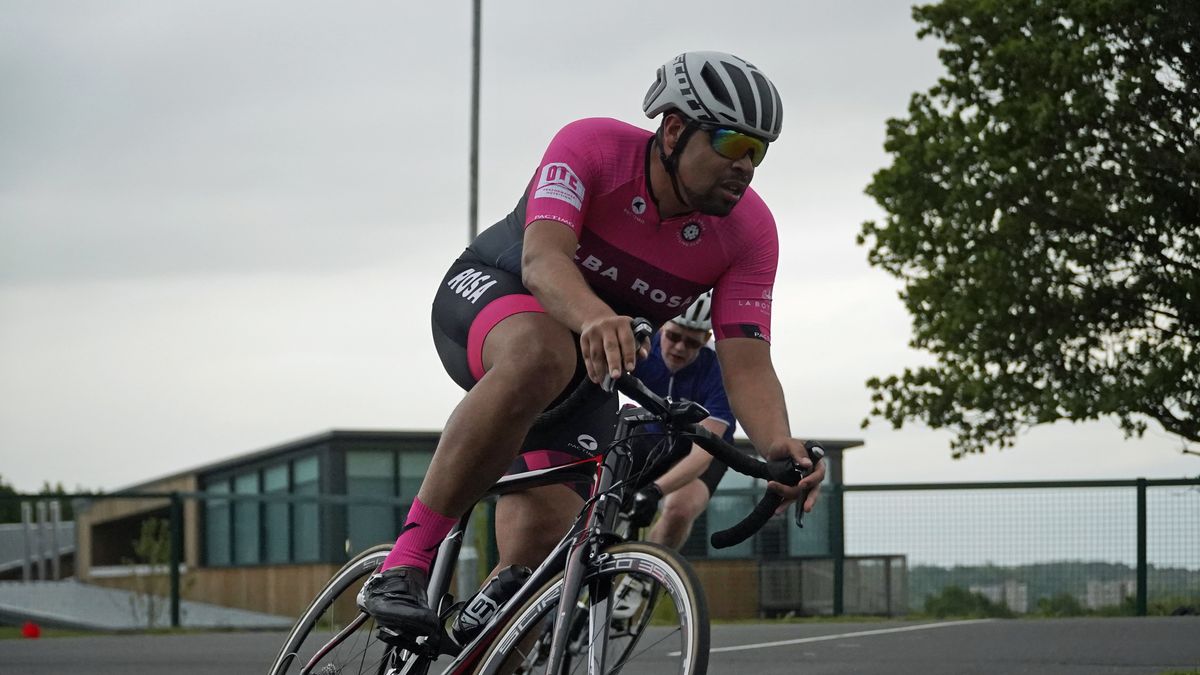Home>Misc>Featured>How To Get Back Into Training For A Triathlon
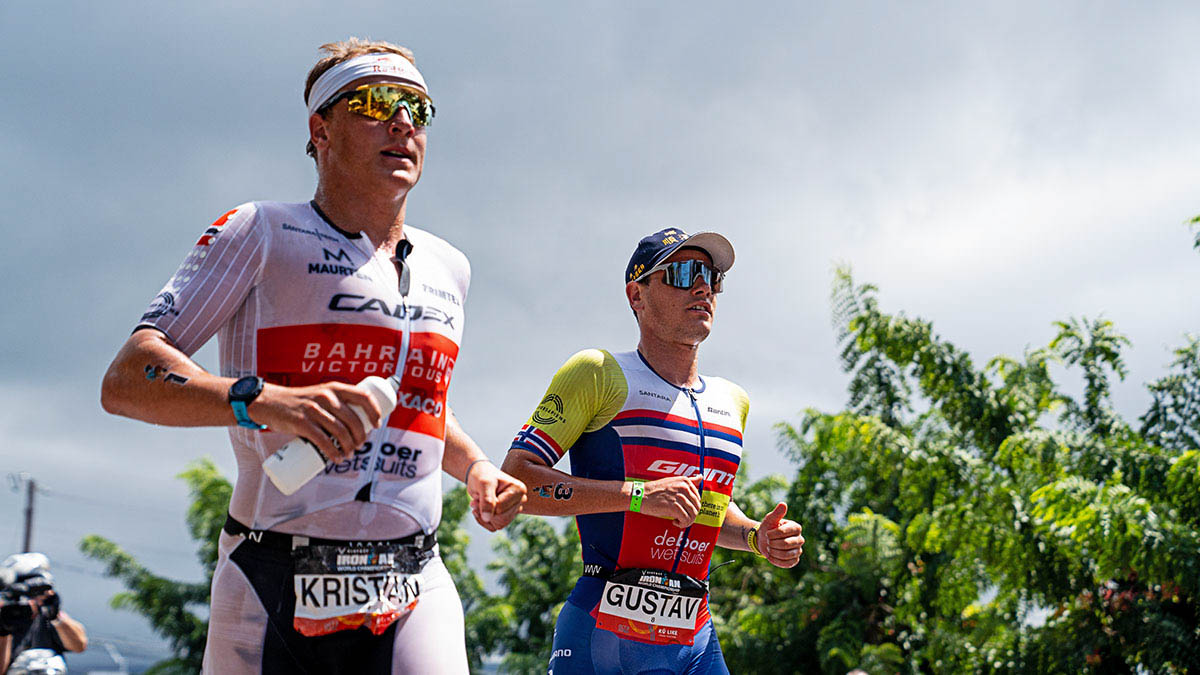

Featured
How To Get Back Into Training For A Triathlon
Modified: January 2, 2024
Discover the best methods to jump-start your triathlon training with our featured guide. Get back in shape in no time and conquer your next race!
Introduction
Training for a triathlon is a challenging yet rewarding endeavor that combines endurance, strength, and mental fortitude. Whether you’re a seasoned triathlete looking to make a comeback or a beginner taking on the exciting journey for the first time, getting back into training requires careful planning and dedication. In this article, we will explore effective strategies to help you resume your triathlon training and achieve your fitness goals.
Triathlons are multisport events that typically consist of swimming, cycling, and running. The combination of these disciplines demands a balanced training approach that focuses on improving performance in each area. Whether you’re returning from a break or recovering from an injury, it’s important to ease back into training gradually to minimize the risk of setbacks.
In this article, we will discuss how to assess your current fitness level, set realistic goals, create a training schedule, incorporate cross-training, and monitor your progress. Additionally, we will explore the significance of nutrition, rest, and listening to your body. By following these guidelines, you can effectively re-engage with your triathlon training and make steady progress towards reaching your full potential.
Before diving into the specifics of training, it’s important to acknowledge that every athlete’s journey is unique. What works for one person may not work for another. It’s essential to listen to your body, seek professional advice if needed, and adapt your training plan accordingly. With that in mind, let’s explore the key steps you can take to get back into training for a triathlon successfully.
Assess Your Current Fitness Level
Before diving headfirst into a triathlon training regimen, it’s crucial to assess your current fitness level. This step is essential to ensure that your training plan is tailored to your individual needs and capabilities. By understanding where you stand in terms of endurance, strength, and overall fitness, you can establish a baseline from which to measure your progress.
To assess your current fitness level, consider the following factors:
- Cardiovascular Fitness: You can measure your cardiovascular fitness by performing a fitness test such as a 1-mile run or a 5K time trial. This will give you an idea of your current aerobic capacity.
- Strength and Muscular Endurance: Evaluate your strength and muscular endurance through exercises like bodyweight squats, push-ups, and planks. Take note of how many repetitions you can comfortably perform.
- Flexibility: Assess your flexibility by performing basic stretches and noting your range of motion. Improving flexibility can help prevent injuries and improve performance.
- Swimming Skills: If swimming is one of your weaker disciplines, consider taking a swim lesson or seeking guidance from a swimming coach to assess your technique and skill level.
By evaluating these aspects of your fitness, you can identify areas that require improvement and design a training plan that targets your specific weaknesses. Remember, the goal is not to compare yourself to others but to understand where you currently stand and work towards progression.
Once you have assessed your fitness level, it’s important to set realistic goals that align with your abilities. This will help you stay motivated and prevent burnout or injury. In the next section, we will discuss how to set achievable goals for your triathlon training.
Set Realistic Goals
Setting realistic goals is a crucial step in any training program, and triathlon training is no exception. Your goals should be specific, measurable, attainable, relevant, and time-bound (SMART). By setting SMART goals, you will have a clear focus and a roadmap to guide your training efforts.
When setting goals, consider the following factors:
- Distance and Race: Determine the distance of the triathlon you will be participating in and set a goal to complete the race within a specific time frame. Be mindful of your current fitness level and previous personal records.
- Discipline-Specific Goals: Set goals for each of the disciplines involved in a triathlon – swimming, cycling, and running. For example, if swimming is your weakest discipline, set a goal to improve your swimming technique or reduce your time in the water.
- Progression: Consider setting short-term and long-term goals to track your progression. Short-term goals can focus on improving specific skills or increasing endurance, while long-term goals can involve completing longer distances or participating in more challenging races.
- Balance: Ensure that your goals are balanced and do not neglect any of the disciplines. Strive for improvement in each area to develop a well-rounded triathlon performance.
Remember that goals should be challenging but also achievable. Setting unrealistic goals can lead to frustration and burnout. It’s important to assess your current fitness level, understand your limitations, and gradually work towards your desired outcomes.
Once you have set your goals, write them down and keep them visible to serve as a constant reminder of what you’re working towards. You can also break down your goals into smaller milestones to celebrate your progress along the way. With clear, realistic goals in place, you’ll have the motivation and direction needed to excel in your triathlon training.
Create a Training Schedule
A well-structured training schedule is essential for reaching your triathlon goals. It helps you stay organized, ensures you allocate sufficient time to each discipline, and allows for proper recovery. When creating a training schedule, consider the following factors:
- Weekly Commitments: Take into account your work schedule, family obligations, and other commitments to determine how many training sessions you can realistically fit in each week. Be honest with yourself about the time you can devote to training.
- Balance and Variety: Distribute your training sessions evenly among swimming, cycling, and running to ensure you give equal attention to each discipline. Additionally, incorporate cross-training activities such as strength training, yoga, or Pilates to improve overall fitness and prevent overuse injuries.
- Progressive Overload: Gradually increase the volume and intensity of your workouts over time. This progressive overload principle allows your body to adapt and improve without overwhelming it with too much stress all at once. Start with achievable levels and incrementally push yourself as you become stronger and more conditioned.
- Rest and Recovery: Include rest days in your training schedule to allow your body and mind to recover. These rest days are just as important as training days as they promote muscle repair, reduce the risk of injury, and prevent burnout. Listen to your body and adjust your schedule if you feel excessively fatigued or sore.
- Flexible Planning: While having a schedule is important, it’s crucial to be flexible and adaptable. Life can throw unexpected challenges your way, so be prepared to adjust your training schedule as needed. Be mindful of not letting deviations from the plan become an excuse to skip workouts entirely.
When creating your training schedule, be sure to include a mix of workout types, such as endurance workouts, interval training sessions, and recovery sessions. Varying the intensity and duration of your workouts will help prevent plateaus and keep your training engaging and challenging.
Remember, consistency is key. Stick to your training schedule as much as possible, but also listen to your body and make adjustments when necessary. By creating a well-balanced training schedule that fits into your lifestyle and aligns with your goals, you’ll be well on your way to success in your triathlon journey.
Focus on Individual Disciplines
To excel in a triathlon, it’s important to give dedicated attention to each discipline – swimming, cycling, and running. While triathletes strive to develop a well-rounded performance, focusing on individual disciplines allows for targeted improvement and better overall results. Here are some tips for honing your skills in each discipline:
Swimming:
Swimming is often considered the most challenging discipline for many triathletes. To improve your swimming ability:
- Take swimming lessons to refine your technique and focus on efficient stroke mechanics.
- Include swim drills in your training sessions to improve specific skills, such as breathing, body position, and bilateral breathing.
- Incorporate open-water swimming sessions to familiarize yourself with different conditions and build confidence in race scenarios.
- Practice interval training to improve speed and endurance in the water.
Cycling:
Cycling is a crucial aspect of a triathlon, as it covers the longest distance. To enhance your cycling abilities:
- Invest in a good-quality bike and ensure it is properly fitted to your body.
- Focus on building endurance through long rides, gradually increasing the distance over time.
- Include interval training to improve speed and power on the bike.
- Practice hill climbing and descending techniques to become more efficient on various terrains.
Running:
Running is the final leg of a triathlon and often requires mental and physical strength. To become a stronger runner:
- Gradually increase your running mileage, considering factors such as your fitness level and any previous injuries.
- Include tempo runs, interval training, and hill repeats to improve speed and endurance.
- Focus on proper running form, including your posture, arm swing, and foot strike.
- Incorporate strength and stability exercises, such as lunges and core workouts, to improve overall running performance and reduce the risk of injuries.
Remember, consistency in training and specific focus on each discipline will lead to improvements over time. Allocate appropriate time and effort to work on areas that need the most attention while still maintaining a balanced approach to your overall triathlon training program.
Incorporate Cross-Training
Cross-training is a valuable component of triathlon training that involves participating in activities other than the three main disciplines: swimming, cycling, and running. By incorporating cross-training into your routine, you can improve overall fitness, prevent injuries, and enhance your performance in the triathlon. Here are some benefits and effective cross-training options to consider:
Benefits of Cross-Training:
- Improved Fitness: Cross-training allows you to target different muscle groups and work on different aspects of fitness such as strength, flexibility, and agility. This improves overall athletic performance and reduces the risk of overuse injuries.
- Injury Prevention: Engaging in cross-training activities helps to alleviate strain on specific muscles and joints, reducing the risk of overuse injuries. By diversifying your training and incorporating low-impact exercises, you give your body a chance to recover and prevent imbalances.
- Mental Refreshment: Participating in different activities keeps your training fresh and exciting. It provides mental stimulation, prevents burnout, and allows you to maintain a high level of motivation throughout your triathlon journey.
Effective Cross-Training Options:
- Strength Training: Incorporate resistance exercises such as weightlifting, bodyweight exercises, or functional training. Focus on building core strength, leg strength, and overall muscle balance.
- Yoga and Pilates: Improve flexibility, balance, and core stability by practicing yoga or Pilates. These disciplines also promote relaxation and help with mental focus.
- CrossFit: CrossFit workouts are designed to improve overall fitness through functional movements and high-intensity workouts. This training method enhances strength, endurance, and power.
- Cycling or Spinning: Indoor cycling or spinning classes are excellent cross-training activities that enhance cardiovascular endurance and leg strength, while also mimicking the cycling component of a triathlon.
- Swimming Drills: Even if swimming is one of the main disciplines in a triathlon, incorporating swimming drills can provide variety and improve technique and efficiency in the water.
When incorporating cross-training into your routine, aim for two to three sessions per week, depending on your available time and recovery needs. Be sure to choose activities that complement and support your triathlon training rather than detracting from it. Additionally, listen to your body and adjust the intensity and frequency of cross-training sessions as needed to prevent overexertion.
By incorporating cross-training into your triathlon training program, you can enhance your overall performance, reduce the risk of injuries, and keep your workouts engaging and enjoyable.
Gradually Increase Intensity and Volume
One of the keys to successful triathlon training is gradually increasing the intensity and volume of your workouts over time. This progressive approach allows your body to adapt and improve without overwhelming it with excessive stress. By following a systematic training plan that gradually challenges you, you can build endurance, improve performance, and reduce the risk of overuse injuries. Here are some guidelines to help you increase intensity and volume effectively:
Start Slow and Build Consistency:
When returning to training or starting as a beginner, it’s important to start slow and build a consistent routine. Focus on establishing a solid foundation of fitness rather than pushing for immediate gains. Begin with a level of intensity and volume that feels comfortable and gradually increase it from there.
Incremental Increases:
Make incremental increases in your training load. This can be done by adding a few extra minutes to your workouts, increasing the number of repetitions or intervals, or slightly upping the intensity of your sessions. Avoid sudden and drastic changes that can lead to burnout or injuries.
Recovery and Adaptation:
Allow for proper recovery and adaptation time between training sessions. Your body needs time to repair and rebuild after challenging workouts. Incorporate rest days and lower-intensity recovery workouts into your training schedule. This will help prevent overtraining and optimize your performance.
Periodization:
Implement a periodization plan in your training, which involves dividing your training into specific phases with different goals. These phases typically include building a base, focusing on intensity and speed, and tapering before a race. This structured approach allows for variation in training stimuli and maximizes performance gains.
Listen to Your Body:
Pay attention to your body’s signals and adjust your training accordingly. If you feel excessively fatigued, sore, or notice any signs of injury, it’s important to take a step back and modify your training plan. Pushing through pain or ignoring warning signs can lead to setbacks and hinder your progress.
Remember, progressing slowly and steadily is key to long-term success in triathlon training. It’s better to make gradual improvements over time rather than risking injury or burnout by rushing the process. Trust in your training plan, be patient, and stay committed to the journey ahead.
Monitor Your Progress
Monitoring your progress is vital in triathlon training as it allows you to track your improvements, identify areas of development, and make necessary adjustments to your training plan. By regularly assessing your performance, you can stay motivated, set new goals, and ensure that you’re on the right track towards achieving your triathlon aspirations. Here are some effective ways to monitor your progress:
Maintain a Training Journal:
Keeping a training journal can provide valuable insights into your progress. Record details of each workout, including duration, intensity, distance, and any notable observations or feelings. This will help you track improvements over time and identify patterns or trends in your performance.
Track Performance Metrics:
Utilize technology and devices to track performance metrics such as heart rate, pace, speed, and distance. This data can help you measure progress and compare your performance across different training sessions and races. Consider using GPS watches, heart rate monitors, or fitness apps to gather accurate and reliable information.
Regular Assessments and Testing:
Incorporate periodic assessments and testing to monitor your progress objectively. This can include time trials for swimming, cycling, or running, as well as functional movement assessments and strength tests. By assessing your performance at specific intervals, you can gauge your improvement and make necessary adjustments to your training plan.
Listen to Feedback:
Seek feedback from coaches, trainers, or fellow triathletes who can provide objective insights into your progress. They may spot areas of improvement or offer suggestions to enhance your training. Additionally, listen to your body and pay attention to any signs of fatigue, injuries, or plateaus. This self-awareness can help you adapt your training strategies accordingly.
Celebrate Milestones:
Acknowledge and celebrate milestones along your triathlon journey. Whether it’s completing a longer distance, achieving a personal best, or overcoming a mental barrier, recognizing your accomplishments can boost morale and drive your motivation. It’s important to stay positive and celebrate the small victories on your path to achieving your ultimate triathlon goals.
Regularly monitoring your progress not only helps you stay motivated but also allows you to make data-driven decisions in your training. By tracking improvements, identifying areas for growth, and adjusting your training plan accordingly, you can continuously strive for better performance and reach new heights in your triathlon journey.
Stay Consistent and Motivated
Consistency and motivation are essential ingredients for success in triathlon training. It’s not enough to have a well-designed training plan and set ambitious goals; you must also maintain consistency in your workouts and stay motivated throughout your journey. Here are some strategies to help you stay on track and keep the fire of motivation burning:
Create a Routine:
Establishing a regular training routine can help you develop a habit of consistent training. Set specific days and times for your workouts and treat them as non-negotiable appointments with yourself. This consistent structure will make it easier to prioritize your training and ensure that it becomes an integral part of your daily life.
Find an Accountability Partner:
Having an accountability partner, whether it be a training buddy, coach, or friend, can provide the necessary motivation and support when the going gets tough. Share your goals with them and check in regularly to discuss progress and challenges. Having someone to share the journey with can make training more enjoyable and help you stay committed.
Set Short-Term Goals:
In addition to your long-term goals, set short-term goals that are achievable and provide a sense of immediate accomplishment. These smaller milestones can serve as stepping stones towards your ultimate objectives. Celebrate each milestone reached, as this will boost your morale and motivation to keep pushing forward.
Reward Yourself:
Treat yourself to rewards along the way to keep yourself motivated. These rewards can be anything that brings you joy and serves as a reminder of your hard work and dedication. Whether it’s a small indulgence or a fun experience, these rewards act as incentives and reinforce positive behaviors.
Switch Up Your Training:
Combat boredom and maintain motivation by varying your training sessions. Explore new routes for running or cycling, try different swimming drills, or participate in group workouts or classes. Mixing up your training keeps things fresh and exciting, preventing monotony from setting in and helping you stay engaged.
Visualize Success:
Use visualization techniques to imagine yourself successfully completing the triathlon or achieving your specific goals. Visualizing your success and feeling the emotions associated with accomplishing your goals can fuel your motivation and help you stay focused on your objectives.
Remember, consistency is key, and motivation is what keeps the wheels of consistency turning. Stay committed to your training plan, find what motivates you, and draw upon that motivation to overcome challenges and stay on track towards becoming a successful triathlete.
Be Mindful of Nutrition and Rest
Proper nutrition and adequate rest are essential components of successful triathlon training. Fueling your body with the right nutrients and allowing it ample time to recover and recharge are critical for optimal performance and overall well-being. Here are some key considerations to keep in mind:
Nutrition:
Maintain a balanced and nutrient-rich diet to support your training and recovery. Consider the following nutrition guidelines:
- Macronutrients: Consume a balance of carbohydrates, proteins, and healthy fats to provide the necessary energy for training and repair muscle tissue.
- Hydration: Stay properly hydrated before, during, and after workouts. Monitor your fluid intake and replenish electrolytes as needed.
- Pre-Workout Nutrition: Fuel up with a balanced meal or snack containing carbohydrates and a small amount of protein before your training sessions to optimize energy levels.
- Post-Workout Nutrition: Consume a combination of carbohydrates and protein within 30 minutes to an hour after training to replenish glycogen stores and promote muscle recovery.
- Whole Foods: Prioritize whole, unprocessed foods such as fruits, vegetables, lean proteins, whole grains, and healthy fats to provide essential nutrients and support overall health.
Rest and Recovery:
Give your body adequate time to rest and recover between training sessions. Consider the following recovery strategies:
- Sleep: Aim for a consistent sleep schedule and prioritize quality sleep to promote muscle repair, hormone regulation, and mental well-being.
- Active Recovery: Incorporate light activities such as stretching, foam rolling, or low-intensity workouts on rest days to aid in muscle recovery and reduce stiffness.
- Rest Days: Include regular rest days in your training schedule to allow your body to recharge and repair. Use this time to relax, engage in leisure activities, and spend time with loved ones.
- Massage and Bodywork: Consider getting regular massages or engaging in other forms of bodywork to help release tension, improve circulation, and support recovery.
- Stress Management: Implement stress management techniques such as meditation, deep breathing exercises, and mindfulness practices to reduce overall stress levels and enhance recovery.
Remember, nutrition and rest go hand in hand with training to support your body’s ability to perform optimally and adapt to the demands of triathlon. By being mindful of your nutrition choices and giving yourself ample time to rest and recover, you can optimize your training efforts and enhance your overall performance.
Listen to Your Body and Avoid Overtraining
Listening to your body is crucial in triathlon training to ensure that you strike a balance between pushing your limits and avoiding overtraining. It’s essential to pay attention to the signals your body sends, as doing so can prevent injuries, burnout, and setbacks in your triathlon journey. Here are some key considerations to help you listen to your body and avoid overtraining:
Recognize Signs of Overtraining:
Be aware of the signs that indicate you may be pushing yourself too hard or not allowing enough time for recovery. These signs can include persistent fatigue, reduced performance, decreased motivation, mood swings, disturbed sleep patterns, increased susceptibility to illness, and chronic muscle soreness. If you experience any of these symptoms, it may be a sign to take a step back and adjust your training protocol.
Honor Rest Days:
Rest days are just as important as training days. They give your body a chance to recover, repair, and rebuild. Avoid the temptation to skip rest days or add extra training sessions, as this can disrupt the delicate balance between stress and recovery. Embrace rest as an integral part of your training program and use this time to relax, rejuvenate, and allow your body to adapt to the training stimuli.
Use Active Recovery:
Incorporate active recovery strategies, such as low-intensity workouts, stretching, foam rolling, or yoga, into your training schedule. These activities help increase blood flow, reduce muscle soreness, and maintain mobility. Active recovery allows your body to recover while still engaging in light movement, promoting faster recovery and reducing the risk of overuse injuries.
Adjust Training Intensity and Volume:
Pay attention to your body’s response to training and adjust the intensity and volume accordingly. If you consistently feel exhausted or experience excessive muscle soreness, it may be necessary to reduce the intensity or duration of your workouts. On the other hand, if your training feels too easy and you’re not seeing progress, you may need to increase the intensity or volume gradually.
Practice Self-Care:
Invest time in self-care activities that support your physical and mental well-being. This can include practices such as meditation, stress management techniques, proper nutrition, quality sleep, and adequate hydration. Taking care of your overall health enhances your body’s resilience, reduces the risk of burnout, and enables you to train effectively.
Remember, the goal of triathlon training is long-term progress and sustainable growth. By listening to your body, respecting its limits, and prioritizing rest and recovery, you can avoid the pitfalls of overtraining and keep progressing towards your triathlon goals in a healthy and balanced manner.
Seek Professional Guidance if Needed
Triathlon training can be complex, and at times it may be beneficial to seek professional guidance to enhance your performance and ensure that you’re training effectively and safely. Here are some instances where seeking professional guidance can be valuable:
Coach:
Hiring a triathlon coach can provide you with expert guidance tailored to your specific goals and needs. A coach can create a customized training plan, offer guidance on technique and form, monitor your progress, and provide motivation and accountability. A coach can help you optimize your training, prevent injuries, and maximize your performance potential.
Swim Coach:
If swimming is a weaker discipline for you, working with a swim coach can help you improve your technique, efficiency, and overall performance in the water. A swim coach can provide valuable feedback, correct your form, and offer specialized training drills to enhance your swimming ability.
Strength and Conditioning Coach:
Engaging a strength and conditioning coach can help you design a training program that focuses on building strength, power, and muscular endurance. A strength coach can guide you in proper weightlifting techniques, design functional training exercises, and help prevent injuries through strengthening exercises and mobility work.
Nutritionist:
Consulting with a sports nutritionist can help you optimize your diet and fueling strategies for optimal performance. They can design a nutrition plan tailored to your specific needs, educate you on proper pre-, during, and post-workout nutrition, and address any specific dietary concerns or restrictions you may have. A nutritionist can help enhance your performance, support recovery, and promote overall health and well-being.
Sports Psychologist:
A sports psychologist can help you develop mental strategies to cope with the challenges of training and competing in a triathlon. They can provide techniques to manage stress, improve focus and concentration, enhance motivation, and develop mental resilience. Working with a sports psychologist can help optimize your mindset, leading to improved performance and enjoyment of the sport.
Remember, seeking professional guidance is not a sign of weakness but rather a proactive approach to improving your performance and overall triathlon experience. Professional support can provide you with insights, knowledge, and personalized strategies to help you reach your goals more effectively and efficiently.
Conclusion
Training for a triathlon is a challenging and rewarding endeavor that requires dedication, discipline, and a systematic approach. By following the steps outlined in this article, you can set yourself up for success in your triathlon journey. Assess your current fitness level, set realistic goals, create a training schedule, and focus on each individual discipline to develop a well-rounded performance. Incorporate cross-training activities to enhance overall fitness and prevent overuse injuries. Gradually increase the intensity and volume of your workouts while also listening to your body and avoiding overtraining. Monitor your progress, stay consistent and motivated, and be mindful of nutrition and rest. If needed, seek professional guidance from coaches, nutritionists, and sports psychologists to take your training to the next level.
Remember, the road to triathlon success is not without its challenges, but with patience, perseverance, and a positive mindset, you can overcome obstacles and achieve your goals. Enjoy the process, celebrate small victories along the way, and embrace the growth and self-discovery that comes with triathlon training. It’s not just about crossing the finish line; it’s about the journey you undertake, the friendships you forge, and the personal transformations you experience along the way. So dive in, train smart, and let the triathlon adventure begin!


